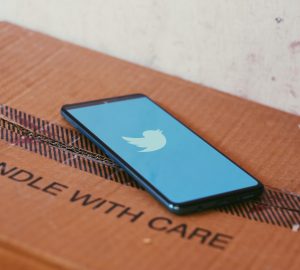Trump caught by Covid-19, fake news and what not to do in a crisis involving the health of a political leader
By Aldo De Luca | MediaTalks, London
For those who are not so young or studied Brazilian recent history, the scenes of Donald Trump’s medical team in front of the hospital answering questions about the status of the American president reminds the trauma of elected president Tancredo Neves’ illness, in 1985. It is impossible not to remember the spokesman Antônio Brito, famous for the expression “gentlemen, I bring good news”, with which he opened the press conferences.
Unfortunately, the good news was scarce and Brito had to announce the death of the president. Neves would be the first civilian president since 1964. Political tension, (with the fear of regression in the course of the recovery of democracy after decades of military government) – and the fact that the illness was diagnosed on the eve of his inauguration – gave rise to the most diverse conspiracy theories, with rumours about attempted murder and even that the announcement of his death would have been postponed to coincide with the martyr for independence (Tiradentes) day.
This behavior is repeated with Donald Trump’s illness. The difference – and a big one – is that in Tancredo’s time there was no internet. There were no social media enabling myths gaining a planetary dimension and influencing the lives of thousands, sometimes millions of people. Also, Neves had not spent months minimising the danger of the disease that would kill him.
Since Donald Trump announced via Twitter that tested positive for the coronavirus, on October 1, disinformation has spread more than the virus. No surprise here, as fake news and Donald Trump have been close friends. In that very week, a study by Cornell University had identified the leader as the biggest generator of fake news during the pandemic, accounting for almost 40% of them.
Reckless management of communication with society
Although speculation around a leader’s illness is to be expected, Trump’s situation was aggravated by the president’s previous stance on the coronavirus, marked by contradictions. And well helped by the way communication has been managed.
Diseases of governors have always posed universal dilemmas to the press and those who manage their communication with society. What is the limit between public and private? How to act with transparency without causing panic in the population and affecting the financial markets or the democracy?
Covid-19 has caused several countries to face this situation in a short period of time, including Brazil and the United Kingdom. But President Donald Trump’s illness was the extreme test one could imagine for the risks arising from misguided information to society.
It has fueled existing conspiracy theories and has been giving the fact-checking agencies extra work, as well as demanding immediate action from digital platforms.
The Poynter Institute anticipated fake news newsletter
The spike in fake news from the moment Donald Trump announced his diagnosis was such that the journalism think tank Poynter Institute anticipated by one day the distribution of the Coronavirus Facts newsletter.
The reason:
“This edition of Coronavirus Facts is coming to you a day early because… well… *gestures broadly* all of this. First, White House staffers began testing positive for COVID-19, then President Donald Trump did as well, and ended up spending the weekend at Walter Reed Medical Center.Misinformation spread quickly about Trump’s condition. “
And listed some:
“There was the claim that he was being deliberately killed at Walter Reed (Pants on Fire!);”
“that he boarded Marine One with a portable oxygen device (False);”
“even one about a Simpsons episode that showed Trump in a coffin(Pants on Fire!). And the misleading information keeps on coming”.
The newsletter reminded the president’s posts that led to misinformation:
“Less than 24 hours after checking out of Walter Reed, Trump tweeted and posted to Facebook the following claim: “Flu season is coming up! Many people every year, sometimes over 100,000, and despite the Vaccine, die from the Flu. Are we going to close down our Country? No, we have learned to live with it, just like we are learning to live with Covid, in most populations far less lethal!!!”
The clarification made by the report is clear, based in oficial statistics:
“In the U.S. so far this year, about 210,000 people have died from COVID-19.But the typical range for the flu is significantly lower. The average number of deaths per year over the past decade has been 35,900. And even taking the high-end of the range for each year, the average is 51,800. That’s half Trump’s number.
Trump’s figure for the number of people who have died from seasonal flu is wrong on its face, and distorts the government’s actual estimates.For the worst season this decade — 2017-18 — the Centers for Disease Control and Prevention put the death toll at 61,000. Taking into account uncertainties in reporting flu deaths, the CDC offered a range of 46,000 to 95,000 deaths.”
Facebook removed the post, but the Poynter Institute said “it had already racked up 26,000 shares and more than 290,000 interactions before the takedown”, based on data from CrowdTangle.
As for the tweet, the platform hid it, with the following note:
“This Tweet violated the Twitter Rules about spreading misleading and potentially harmful information related to COVID-19. However, Twitter has determined that it may be in the public’s interest for the Tweet to remain accessible.”
And the Poynter’s newsletter reminded previous dangerous content from Donald Trump not removed:
“Don’t be afraid of Covid. Don’t let it dominate your life. We have developed, under the Trump Administration, some really great drugs & knowledge. I feel better than I did 20 years ago!”
Since them, this Institute and a number of fact-checkers across the world have been working hard to clarify misinformation – some completely unfounded.
Great opportunity for conspiracy theories
Notorious for being related to some of the most dangerous conspiracy theories associated with Covid-19, Donald Trump ended up seeing himself as a victim of the poison itself. Absurd theses about the president’s illness mushroomed across social media.
In an article published on October 7, Vanity Fairstated that “Donald Trump’s COVID-19 infection has inspired so many fantastical crank theories that there’s now nearly a JFK–level number of options to choose from on the subject of the president’s health.” And listed some:
“Was his contraction of the virus a Chinese assassination attempt? A chance for him to step out of the spotlight to secretly arrest Hillary Clinton for her involvement in an international pedophile ring? A Democratic plot to sideline him right before the election? A fabrication to help Trump earn the sympathy vote, delay the election, or distract Americans from his growing list of last-second scandals? “
“One theory contrived by Trump supporters includes the claim that a man cleaning the stage at last week’s presidential debate might have “targeted” the president by weaponizing a coronavirus-covered “rag,” which was used to wipe down the podium and a “wire connected to his mic.”
Michael Moore, the documentary filmmaker, raised doubts about the diagnosis
Even a famous documentary maker got involved with conspiracy theories. The American director Michael Moore used Facebook to suggest that Donald Trump’s coronavirus diagnosis would be false. The post was shared almost 90,000 times in 10 days.
Case study: Trump’s disease reminds what not to do in a crisis
The communications management of Donald Trump’s Covid-19 will be reminded for a long time as an example of what not to do, due to the succession of errors and reckless attitudes. The communication of medical bulletins was marked by evasive sentences, omissions and selective disclosure of optimistic data.
The Poynter Institute recounted how the media covered the announcement, and some of the inconsistencies.
There are lessons to be learned. The first: lying or minimising the seriousness of the disease will not change the course of the disease at all.
But this lesson is not learned in medical school, as seen in the first press conference by Dr. Sean Conley, on Saturday (3/10) around noon. At the time, he referred to the “patient with 72 hours of diagnosis”, which would push the date of the positive test to the previous Wednesday.
This would contradict Trump’s announcement of testing positive, which was only done in the early hours of Friday. The White House then had to disclose a position in which the doctor would explain that, where he spoke “72 hours”, that he would come to understand “third day”.
When asked about the last negative test, the doctor tried to escape by saying that he would not talk about all the tests in the past. But it wasn’t just that.
Asked if the president was using supplemental oxygen, he replied that he was not. When a more insistent reporter asked if he had done it before, he disagreed. He tried at all times to emphasize the president’s positive attitude.
And then we come to the second lesson, emphasized by CNN reporter Kaitlan Collins: talking about the patient’s attitude is not the same as talking about his vital signs, especially when that patient is the president of the nation.
On Sunday (4/10), in his second press conference, dr. Conley admitted that Trump had to resort to supplemental oxygen. And not just one, but twice: one on Friday and the other on Saturday, when he was given dexamethasone. But, conveniently, the doctor did not specify the number of times that oxygen had to be administered in each episode: “Both times, he received some oxygen and recovered quickly”.
Asked why he hadn’t revealed it the day before, he replied that was trying to reflect the optimistic attitude of the team and the president .
The third lesson was taught by CNN’s medical consultant, dr. Sanjay Gupta, who defended absolute honesty when providing such information. And pointed out the difference between being optimistic and cheating.
The lack of transparency and omissions in the official version were soon filled with false stories and conspiracy theories.
One of the most fun was that the Simpsons had already predicted Trump’s death. It took up an image of him inside a coffin, which has been around since 2017. The scene had already been unmasked by the website Snopes as never having appeared in any episode of the series.
Version mismatch or combined play?
It was noteworthy that while the medical team only brought good news, Trump’s chief of staff passed a completely opposite version. The day after he was admitted, Mark Meadows told reporters that Trump’s condition had deteriorated considerably. And he emphasized that the next 48 hours would be critical.
More disagreements in the discharge day interview
At the third press conference, on the day Trump announced he would leave the hospital, Dr. Sean Conley reported that Trump had been without any antipyretic medication for 72 hours. It would be evidence of Trump’s improvement, as this is a sign of recovery for those affected by Covid-19.
But it was another half-truth from the doctor, since dexamethasone, which had been given to Trump to decrease inflammation, is a drug that reduces fever.
Asked if the disease would have caused damage to Trump’s lungs, he said that he was prevented from disclosing this data due to privacy rules established by the medical protocol.
Finally, when asked if the discharge announced for that day would not be premature, Conley replied that there was nothing to be done at the hospital that could not be done at the White House.
This time he spoke the truth. Too bad that not everyone can have all the resources of a high-end hospital available at home.
Campaign-style video records the return to the White House
At the end of that day, Trump boarded the Marine One. He was back in the campaign, with the press summoned to record his arrival at the White House.
Everything was filmed from different angles and a video with the same style as the campaign was released. Trump says: “I’m back to work. I know the danger, but as your leader, I had to do this. Nobody who is a leader would not have done that ”.
But not everything went as planned, because the cameras caught her breathing at times.
With God’s blessing, the use of traditional media
In order to minimize criticism that he had benefited from a treatment that no one had in a country where 210,000 people died of Covid-19, Donald Trump said in a video that he had actually received “a blessing from God”. And he promised that he would provide the same treatment, from that moment and for free, to all Americans.
In addition to the almost insurmountable difficulties from a technical, financial and logistical point of view, Trump’s treatment includes an experimental drug. It is able to boost the immune response, but it has not yet been approved by the FDA. Therefore, it cannot be made available immediately, as promised.
However, in most cases the traditional media did not point out that it was an impossible promise, as demanded by social media.
Lesson learned?
Of course, it must be taken into account that dr. Conley, also a Navy commander, was in a very difficult position during his performance as a communicator. He met with the patient shortly before leaving to give the interviews. And as a military, he was doubly subordinate to his orders, either as president or as commander-in-chief of the armed forces.
As for Trump… in the midst of the crisis, he compared his infection to going to school to absorb knowledge: “I learned a lot about Covid. I learned at the real school, not reading school books ”.












